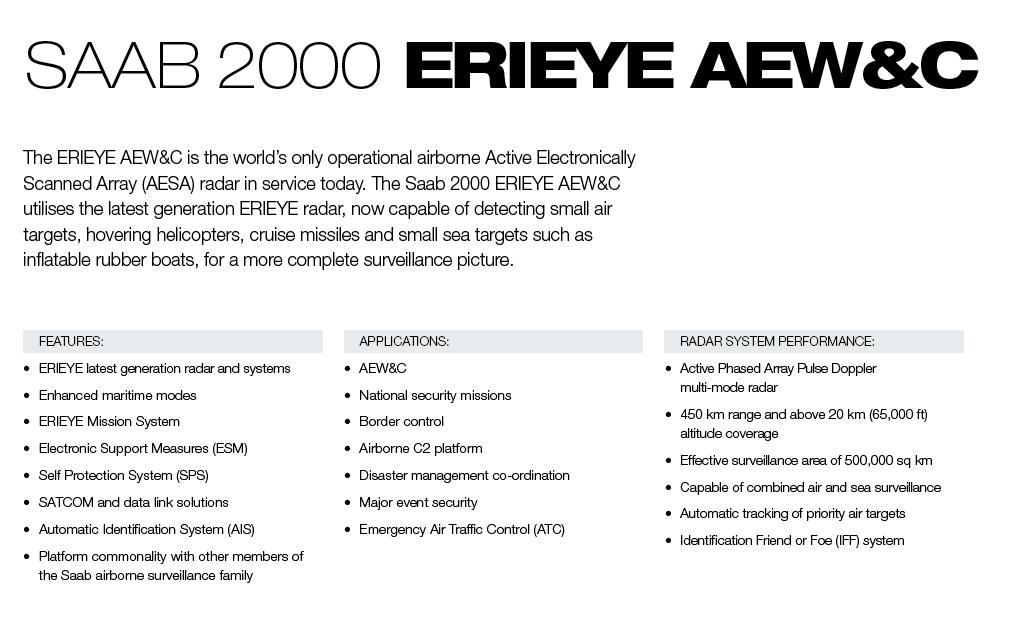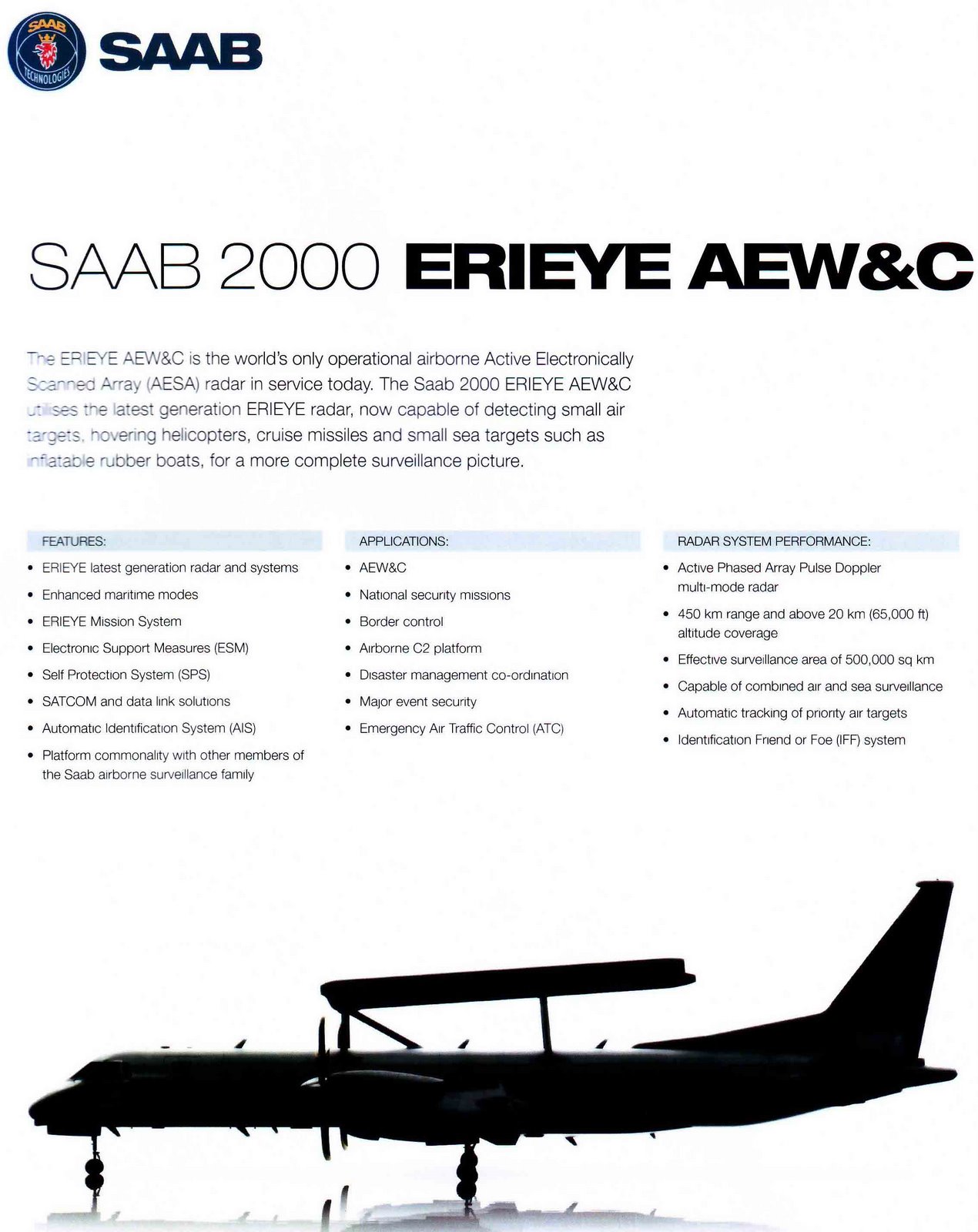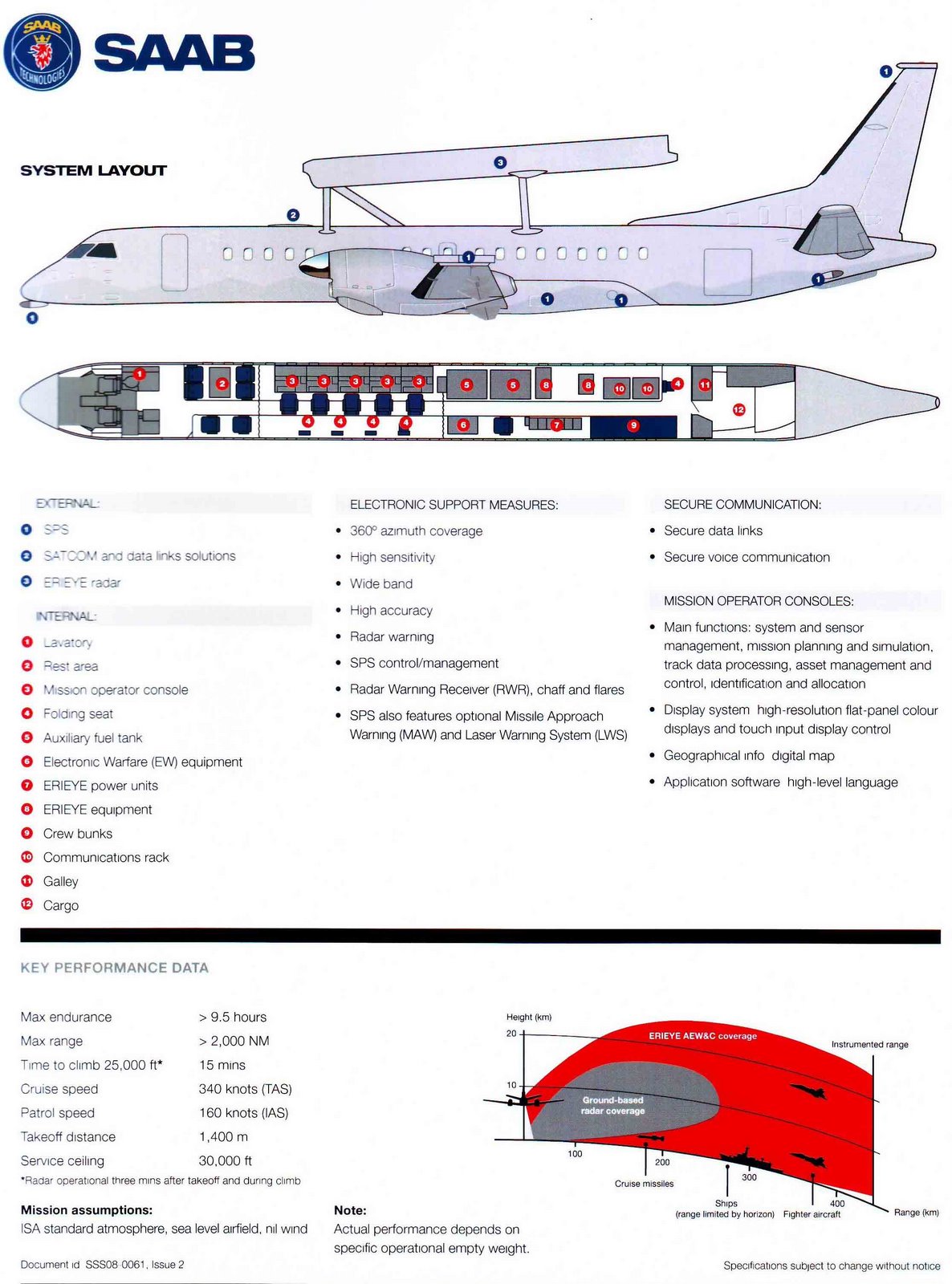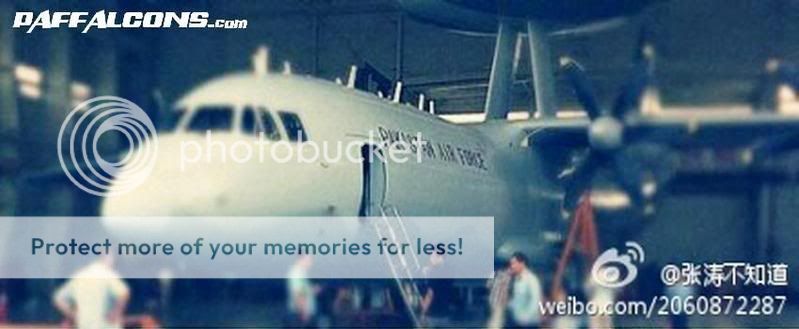Manticore
RETIRED MOD

- Joined
- Jan 18, 2009
- Messages
- 10,115
- Reaction score
- 114
- Country
- Location
This is a NO discussions thread opened due to the difficulty faced by members to find the core info quickly in the discussions thread. Mods will delete/move posts to the awacs discussions thread if members start discussing here
AWACs/AEW&Cs Aircrafts Designs
An airborne early warning and control (AEW&C) system is an airborne radar system designed to detect aircraft. Used at a high altitude, the radars allow the operators to distinguish between friendly and hostile aircraft hundreds of miles away. AEW&C aircraft are used for defensive and offensive air operations. The system is used offensively to direct fighters to their target locations, and defensively to counter attacks. It can also be used to carry out surveillance, and C2BM (command and control, battle management) functions.
AEW&C is also known by the older terms "airborne early warning" (AEW) and "airborne warning and control system"






AWACs/AEW&Cs Aircrafts Designs
An airborne early warning and control (AEW&C) system is an airborne radar system designed to detect aircraft. Used at a high altitude, the radars allow the operators to distinguish between friendly and hostile aircraft hundreds of miles away. AEW&C aircraft are used for defensive and offensive air operations. The system is used offensively to direct fighters to their target locations, and defensively to counter attacks. It can also be used to carry out surveillance, and C2BM (command and control, battle management) functions.
AEW&C is also known by the older terms "airborne early warning" (AEW) and "airborne warning and control system"
AWACS = AEW&C. Its a change in nomenclature and terminology over the past decade or so. All current systems including the Phalcon, Wedgetail, Erieye and E3 are now categorized as AEW&C. There are some old articles lingering on the web which try to make this distinction between the two definitions. The reality is that the only AWACS was the first one and that was the E-3 Sentry. That was the name given to the aircraft. People started linking the size of the platform to assume the bigger ones were AWACS and smaller ones AEW&C, when in reality, some of the smaller systems pack more gadgetry and technology than the bigger platforms. Now everything is AEW&C.
Please see post 1470 for some background on this now inane discussion.
As to the your points about the need for more, there should be realization that Over the Horizon radar coverage as afforded by the Erieyes is not the only asset available to Pakistan. We have a very well integrated ground based radar network available too. Although some gaps remain however between the ground based radars and the Erieyes, PAF will be in a very good overall situation to get early warning of any impending ingresses.
The threat to Pakistan is primarily uni-directional and in the past when we have had to face threats from both the Eastern and Western borders, we have employed our ground based radars to cater to such needs. The employment of Erieyes will be no different and more importantly, the Erieyes will fill the gaps that the ground based radar coverage has. As such optimal employment and sensor fusion is more important to the PAF than worrying about maintaining 3-4 AEW flights simultaneously on station 24x7 given the current envisaged threat.
In case of hostilities, IAF will be moving many of their assets closer to the Pakistan border in any case. In such cases, although early warning by Erieye will be better than what is available currently, even then it will be limited (this goes for India as well) because the attacking aircraft are so close to their intended targets. As such the role of Pakistani Erieyes will not just be providing early warning and doing so all on their own, because as stated, they will be backed by a pretty well integrated layer of recently upgraded ground based radars. Secondly, Erieyes will be providing the very essential control function to the combat assets and for this the numbers purchased from Sweden and those to be acquired from China will suffice.
Lets also not forget that contrary to your assertion, 360 degree coverage for the PAF was/is not a deal breaker as we were offered the most upgraded version of Hawkeye 2000 based on the APS-145 radar which not only provides very good tracking ranges, but also offers full 360 degree coverage. Despite this, PAF had issues with its performance in certain regimes/terrains and these requirements were met by the Erieye despite the full 360 degree coverage issue.
It matters little whether we have 360 deg coverage or not. You have to think about various things about the employment which can make 360 degree coverage redundant.
A couple of things about the Erieye that should be noted include:
i) Although the aircraft's dorsally mounted AESA radar does not provide 360 degree coverage, the aircraft makes up for the 60 degree blind spots (aft and fore - 30 degrees each) by using its ESM capabilities to defend itself and disrupt the AI radars of the adversary if the threat is emanating from either the aft or fore side.
ii) In most cases, a 360 degree coverage is a limited use luxury because usually the AEW capability is directionally focused, meaning that you are catering for a threat emerging from a certain set of vectors/direction(s). Think about 150 degree coverage being provided by the Erieye on the eastern front and think about what the 150 degree coverage translates into in terms of miles and you will come to the realization that even with a 150 degree over the horizon coverage, Erieye provides a very significant early warning to our air defences.
Where the 360 coverage is helpful is if and when the AEW capability is being used in disaster recovery work where due to the lack of ground facilities, an AEW platform is being used to control air traffic from all directions. However even in such cases, the Erieye AEW platform(s) can be deployed in patterns where providing such coverage is not a huge challenge.
iii) In combat situations, the AEW platform may be called upon to work in extremely dense, multi-vector situations where aircraft from various bases and locations are converging or are being vectored to and from multiple locations. In this case, full 360 degree coverage would be helpful. A very good example of this has been the use of AEW platforms in the two gulf wars where USAF and NATO E-3s were employed in this role extensively and had to monitor air traffic which at times had close to above a thousand nodes in the air at the same time from all around Iraq's neighbouring countries.
Fortunately for the PAF, the threat is primarily uni-directional and while the breadth of the air space to be monitored can be large, the threat pretty much arises from one direction (in this case from the East) and will not require very dense controlling and tracking as the number of aircraft in any Indo-Pak scenario would be limited (certainly less than 200-300 or less in the air at a time). As such having a full 360 degree coverage, aside from bragging rights, does not make or break the deal for the PAF. Had this been a major concern for the PAF, they would have gone for the Hawkeye 2000 on offer by the US with its full 360 degree coverage.




Blain is correct when he states that there is now no difference.
AWACS which stands for Airborne warning and control system was coined by the US for the E-3. Before that many AEW platforms had come and gone starting in the 50's. This was the first system that put Combat control into the platform. So in reality the E-3 was the first AEW&C aircraft, the AWACS designation was meant for it originally but became a commonly used term. The correct designation for all of these platform is AEW&C.
Although the E-2 was in service before that its early years were spent sending information back to the 'war room' of the carrier and its was known in Navy designation is E-2 AEW. The C for control came later as datalinks and radio communication matured.
As for now, the wedgetail is the creme of the crop. An Agile beam antenna, Substantial ESM and ECCM. Crew comfort and data capacity. It also is very expensive though not the most, the most expensive is the Japanese E-767 series which cost the Japanese a lot of greenbacks.
However, with the latest upgrades now in the offing for the E-3 which is about to go through this cycle, it will gain most if not all of the abilities of the wedgetail including a rotating AESA, More powerful ESM and with its greater loiter time, combat capacity and ability to defend itself.. will retake the title of the best machine.
The Chinese are still far behind in Radar tech and will take another 5 or so years to achieve the standard.
What is a nice addition is, what could be the best design for an AEW&C jet..Well, something like the B-1 with an integrated conformal AESA array all over.. Being able to get to a deployment area quick.. and get out quick.
The radar scan-limitations is not bothering anyone other than amateur forum posters. The nearest rotodome competitors can't scan 360d radar all at the same time either. To focus energy they have to stop the dome and create larger blind spots since it's no longer refreshing the full 360.
Embraer got a pdf that also points out what I mentioned b4, maybe a repost and if so I am sorry.
http://www.embraerdefensesystems.co...nho=download/pdf/01-0113296_CapaAEW_pg001.pdf
This is for previous gen Erieye used in Brazil but of course fundamentally the same praxis.


Ps. A very good reason for selecting the Saab 2000 is that you get all the major systems from one supplier and nation.
Aircraft:Saabs own design, own property, ready made.
Radar: Saab
ESM/SPS: Saab
Operator consoles: Saab
Flight test/training: Saab
etc.
No other western AEW company can deliver as much from under one roof.







































 That was the reason that PAF Il78 visited germany.
That was the reason that PAF Il78 visited germany.




